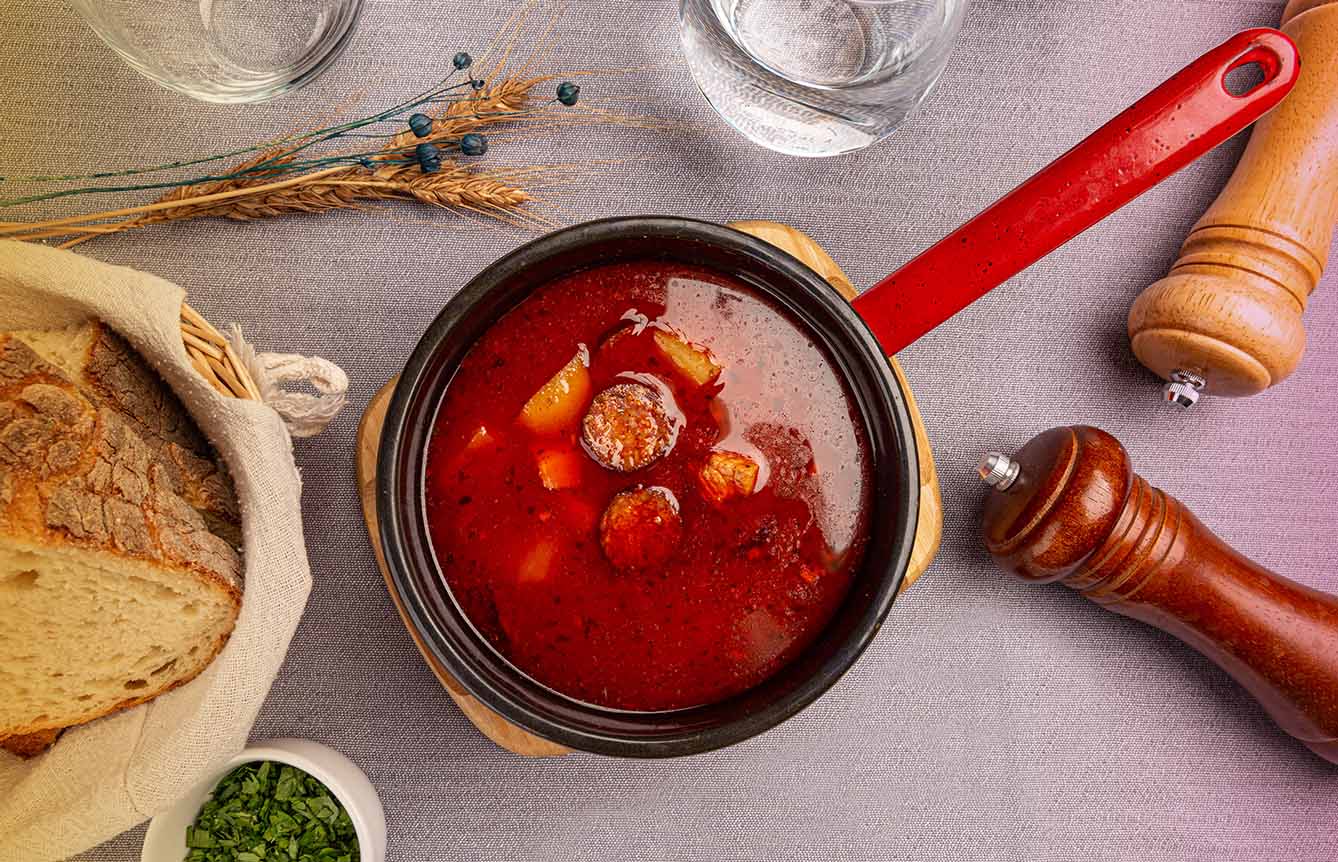Fancy, gourmet dishes tend to be associated with minute portions, expensive restaurants, and big, official parties, and as classy and exquisite as they may be, they rarely make it to represent the national cuisine of a country. This role usually befalls the humble dishes that have been eaten (and perfected) over the centuries by those who live from the richness of the land. It is, therefore, the regional comfort food that encapsulates the story of a country – not the posh delicacies. The case of goulash is no different.
In the beginning, there was pepper. Then there was goulash
The plant came to Hungary with the Ottomans, who, as we know, occupied Hungarian lands for more than a century. They brought several culinary marvels that stayed, even when the uninvited lot was sent back to where they came from, among them, chili peppers. At first grown by the wealthy purely for ornamental purposes (the quirky fruit of chili bushes were of highly decorative colors starting with green to turn into bright yellow, optimistic orange, and, finally, noble red), the plant made its way to the gardens of lower classes.
Giving pepper plants to the peasants slowly turned Hungarians into true masters of its cultivation. They invented new varieties and, in the end, developed another product their country is famous for – paprika spice. At first properly hot, the art of turning pepper plants into sought-after red powder was flourishing. The cycle was considered complete when in the 20th century János and Balász Pálffy developed a way to separate the flesh of the peppers from their seeds and white ribs, arriving at a much milder ‘sweet paprika’ that by then was high in demand (not everyone could handle the heat of paprika-seasoned dishes).
Living with the cows
But let us go back to the goulash. It all started with herdsmen tending to their livestock. They would spend months up in the hills, tending to their herds. Now, these weren’t the times of takeaway dishes. They were even far from eat-in culture! Up in the wild fields, men would hang a pot over a fire and prepare their meal. What ended up in the pot was largely what they could find or store up there – lard, onions, salt, and black pepper together with supplies that didn’t go off quick like millet and bacon.
Sometimes a cow would die (or it would be helped to cross over to greener pastures), providing its former caretakers with a real treat of lightly fried meat on lard with onions, poured over with water, and seasoned with black pepper. Gradually, the latter got substituted with coarsely ground, dried chili peppers, giving the dish its truly spicy finish that comforted tired herdsmen. (And gave the dish its interesting red color.)
Climbing up the social larder
Somewhere in the 18th century, the dish was becoming increasingly known among those coming to visit the Hungarian lands. They were also left comforted by the flavors slowly stewed over the fire, and, since in Hungarian the cow-tenders were known as gulyás, they would call the dish gulyás hús. But aristocracy was hardly convinced.
Their gourmet, French-style food would remain the only one acceptable during high-class gatherings and despite goulash’s (also referred to by locals as pörkölt) rising popularity elsewhere, the doors to the finest dining rooms remained shut. Luckily for goulash, not all nobles were equally wealthy. The abrupt Habsburg rule and Germanization of the country (German became the official language in the Hungarian lands) left those with less royal connections frustrated and adamant about emphasizing their Hungarian customs and heritage. (*Hungarians got so used to goulash they even dubbed their 20-century political system the goulash communism.)
So, as if to spite those whose lips were too pretentious to try the true product of the land, they would insist on preparing goulash, albeit sometimes a little altered, in their homes. As a result, nothing could stop the dish in the 19th century in its run for fame. Not even Napoleon Bonaparte, who, with his embargo on oriental products (black pepper), simply sealed the deal for paprika being used as the seasoning.
Goulash, gulasz, guláš, gullasch, ghoelasj, Gulasch, გულაში, גולש, гуляш, غولاش… The word is – goulash! From the Hungarian fields and humble peasants, the dish made it to languages and houses of people all over the world. Its Hungarian heritage can be easily traced, as the sound of the word got simply adopted. No wonder – no country had a word capable of expressing the yummy richness of this meat stew. Goulash will forever be… the Hungarian gulyás hús.







